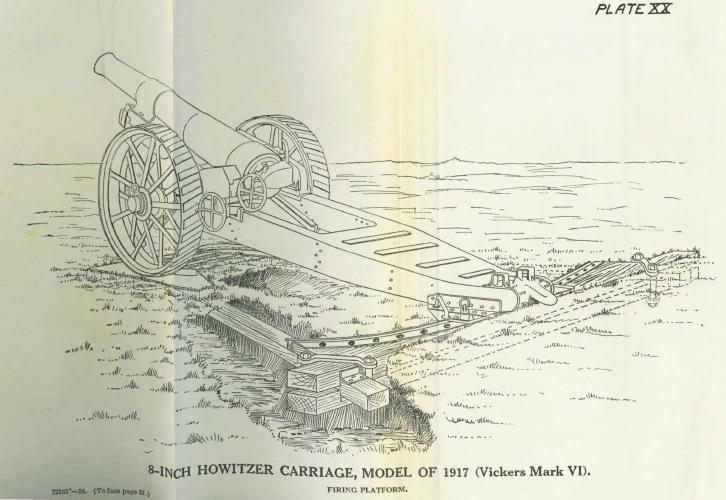Today’s gun is a bit larger than before – I want to take a quick jaunt back to artillery. We have a pretty thorough operations manual for the Vickers Mk VI 8″ howitzer. This piece dates from 1917, where it was developed to replace earlier 8″ guns made from shortened naval gun barrels.

The Mk VI was a heavy beast at a bit over 5 tons in weight, but fairly effective. It’s main negative feature was a somewhat limited range for it size (about 10,000 yards). These were used by the Allied forces in World War I and also saw some use with the Finnish Army in the 1940s.
The Piece used an interrupted screw breech and a box trail (one large leg with a cutout to allow the gun to be elevated, as opposed to two legs that would split apart). The downside of the box carriage was that it only allows a 4 degree traverse, so gross aiming had to be done by moving the whole gun. As you can see in the above picture, this was typically done by mounting the piece to a platform for simpler adjustment. Ammunition was the bagged type – powder and projectile were loaded separately, and cartridge cases were not used. The rate of fire was only about 1 round per minute, because the barrel had to be lowered to allow reloading.
The manual does a good job of explaining in detail the various parts of the gun (breech, recoil system, etc) as well as the components of the mount (sights, elevation and traversing gears, and so on). To me, that’s the more interesting material for this type of weapon. If I were going to build a replica artillery piece, I think the fun part would be designing and building the carriage.
Anyway, you can find the manual here, or from the Original Manuals page of the Vault:
(1918) Vickers Mk VI 8″ Howitzer manual (English)


Nice monster :))))